




A Mother’s love is one of life’s greatest blessings. This Mother’s Day, we celebrate not only Mothers but also grandmothers, aunts, and all Mother figures whose love and wisdom shape our lives.
From growing families to retirees, our dedicated, caring team provides personalized guidance to ensure you have the right health plan for every stage of life. Whether you’re exploring Medicare, family coverage, or individual options, we’re here to support you all year long—just like family.
Three generations: RetireMed client Martha Wenstrup and Virginia Wenstrup, St. Rose parishioners, and RetireMed Benefit Advisor, Clare Gebhardt.
Photo: Rebecca Carmel Photography

From childhood, I felt called to be an artist. I wanted to make things—but not just any things. I wanted to create things that last, because I believed that the best art long outlives the artist. I believed that if the work of my hands didn’t matter, then surely I didn’t matter.
So I worked hard, determined to prove my worth. But I found that there was no room in my day for both my plans and God’s plans. The loud, persistent call for achievement and validation drowned out the subtle voice of the Spirit telling me that I was already enough.
My daughter Jane is five years old. She was born with a tenacity that challenges our household to evaluate (and reevaluate) how we order our days. Every morning before I leave for work she asks me if I will come home early. Jane does not judge me by the quality or quantity of photographs I take or videos I produce. In fact, she would prefer that I work less altogether. My value to Jane lies in being with Jane.
When Jesus visits the home of Martha and Mary, Martha works while Mary sits with Him. “Martha, burdened with much serving, came to him and said, ‘Lord, do you not care that my sister has left me by myself to do the serving? Tell her to help me.’ The Lord said to her in reply, ‘Martha, Martha, you are anxious and worried about many things. There is need of only one thing. Mary has chosen the better part and it will not be taken from her’” (Luke 10:40-42). I
Publisher: Archbishop Robert G. Casey
Interim Editor: Margaret Swensen
Graphic Design: Emma Cassani
know that so often, when I choose to worry about work, I choose the lesser part.
I am grateful to work as an artist as a means of providing for my family. I do believe that God’s hand has mercifully guided me, despite my earthly distractions. But my vocation as a wife and mother has changed my heart over the last eight years. I’ve learned that my yearning for perfection, for eternity, is a yearning for God. But I’ve also learned that the anxiety that keeps me from being present with my family is not from God. My husband and children have taught me that my work does not determine my worth.
Jane’s tenacity has yet to cure me of my iniquities, although I trust that she won’t stop trying. Like Martha, I have looked into the face of God and told Him what I need Him to do in order to fulfill my plans. I have heard Jane’s plea for me to come home early, and then still come home late and distracted by the work left undone. I remain an imperfect person, anxious and worried about many things.
But there is need for only one thing. Today I choose to sit with Jane, to bring Christ to her. That is the better part. And it will not be taken from me.
Margaret Swensen
cteditorial@catholicaoc.org

Media Sales: Deacon Graham Galloway
New Media / Circulation: Greg Hartman
Digital Engagement: Colin Rahill
Social Media: Taylor Motley
Photography: Margaret Swensen, Jake Emser

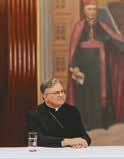


Dr. Kenneth Craycraft
kcraycraft@athenaeum.edu
holds the James J. Gardner Chair of Moral Theology at Mount St. Mary’s Seminary & School of Theology. He is the author of Citizens Yet Strangers: Living Authentically Catholic in a Divided America.

Father David Endres
dendres@athenaeum.edu
is professor of Church history and historical theology at Mount St. Mary’s Seminary & School of Theology.

Dr. Andrew Sodegren
asodergren@ruahwoods.org
is a Catholic psychologist and director of psychological services for Ruah Woods. He speaks on the integration of psychology and the Catholic faith. He and his wife, Ellie, have five children.

Emma Cassani
ecassani@catholicaoc.org is the graphic designer behind The Catholic Telegraph. She is passionate about exploring the intersection between art and faith.

Colin Rahil
crahill@catholicaoc.org
is the Director of Digital Engagement for the Archdiocese of Cincinnati, as well as a writer and speaker.

Katie Sciba
is a national speaker and Catholic Press Award-winning columnist. She and her husband Andrew were married in 2008, and are blessed with seven children.
Let us pray that through work, each person might find fulfillment, families might be sustained in dignity, and that society might be humanized.

Afriend of mine began discerning priesthood soon after his First Communion. From the age of eight, he dreamed of the day when he could be a priest and celebrate Mass. This was not me. I did not consider a vocation to the priesthood until the end of my junior year in high school. I had been asked by the pastor of my parish if I had ever thought about being a priest. My response? A resounding “no.”
However, after that moment, a spark ignited in my mind and heart. And as that spark began to grow brighter, giving light to the path forward, I saw that perhaps priesthood was the way forward for me. By the fall of my senior year in high school, I wrote a letter to my parents revealing my curiosity about priesthood. With my father’s recent death this past December, I came across that exact letter as my family sorted through my late parents’ memorabilia.
Reading that letter after so many years, I recalled how I had attended a weekend retreat sponsored by my Catholic high school. As part of the retreat, all of the students were asked to write a letter to their parents. The priest conducting the retreat told us that he would mail the letters upon our return home. This made me happy, knowing that I would have a few days to drop some hints to my mom and dad before the letter would arrive by mail, revealing to them my hopes for priesthood.
When the bus arrived at the high school from the retreat center, we were informed that our parents had been gathered in the chapel to receive us. After parents and sons were
seated together, the priest brought forth the stack of letters and declared he wouldn’t put them in the mail but would distribute them that night. I was in shock. Out the window went my plans to have a few days to prepare my parents. Suddenly, my father was sitting next to me holding that fateful letter in his hands.
My mother was at work that evening, so I instructed Dad not to open the letter until we were home so Mom could be there also. As parents throughout the chapel were crying and hugging their sons, I was in a state of panic. How would my parents respond when they learned their son was considering becoming a priest? I knew that my parents loved me and loved the Church, but I wondered what they might think. Would they support me?
My mother arrived home after her shift at work, and I handed her and Dad the letter and went to my bedroom to await the verdict. Soon there came a knock on my door and my parents offered me hugs and words of reassurance. They said they would support me. They encouraged me to listen to what God was calling me to do and seek a path that would make me joyful in life. They would neither push me towards priesthood nor pull me away from priesthood but would walk by my side as we discerned God’s will for me. Their unconditional love was the greatest gift my parents could have given me.
That journey, from October of 1984 to May of 1994 when I was ordained a priest, taught me some great life lessons. As I discerned the call to priesthood, I learned that a vocation is
not simply God calling someone, but the response of the one called to serve, and the endorsement of those being served. If God, the individual, and the immediate community are not all onboard, a vocation has little chance of survival.
Since my days as a seminarian, I have learned the importance of surrendering to God’s will. My motto as a bishop is “Into Your Hands.” We must place our discipleship into the hands of God for the people we have been called to serve. Especially when the path ahead seems unclear and doubts and uncertainties get in the way, we must trust that God knows best. Developing a life of prayer and learning how to recognize the signs offered by God become quite important to our vocation, helping us each day to surrender ourselves more willingly into God’s hands.
Pedro Arrupe, S.J., a Spanish Jesuit priest and a man of great spiritual depth, once said, “More than ever I find myself in the hands of God. This is what I have wanted all my life from my youth. And this is still the one thing I want. But now there is a difference; the initiative is entirely with God. It is indeed a profound spiritual experience to know and feel myself so totally in God’s hands.”
In our surrender unto God, we come to discover that God already holds us. The prophet Isaiah assures us of God’s commitment to us: "Behold, I have inscribed you on the palms of My hands" (Isaiah 49:16). In God’s hands we find our safety and comfort; we are held with tenderness, secure and protected. In God’s hands we can confidently say “yes” to His call.

Welcome, Archbishop Robert Casey. Sending you our prayers and best wishes.
Thank you, Archbishop Dennis Schnurr. Wishing you peace and a joyful retirement.



Un amigo mío comenzó a discernir el sacerdocio poco después de su Primera Comunión. Desde los ocho años soñaba con el día en que pudiera ser sacerdote y celebrar la Misa. Ese no era yo. No consideré la vocación al sacerdocio hasta el final de mi tercer año en la preparatoria. El párroco de mi parroquia me preguntó si alguna vez había pensado en ser sacerdote. ¿Mi respuesta? Un rotundo “no”.
Sin embargo, después de ese momento, una chispa se encendió en mi mente y en mi corazón. Y a medida que esa chispa comenzó a brillar más, dando luz al camino a seguir, vi que tal vez el sacerdocio era el camino a seguir para mí. En el otoño de mi último año de la preparatoria, escribí una carta a mis padres revelándoles mi curiosidad sobre el sacerdocio. Con la reciente muerte de mi padre en diciembre pasado, encontré esa misma carta mientras mi familia revisaba los recuerdos de mis difuntos padres.
Al leer esa carta después de tantos años, recordé cómo había asistido a un retiro de fin de semana patrocinado por mi escuela preparatoria católica. Como parte del retiro, se pidió a todos los estudiantes que escribieran una carta a sus padres. El sacerdote que dirigía el retiro nos dijo que enviaría las cartas por correo a nuestro regreso a casa. Esto me hizo feliz, sabiendo que tendría algunos días para darles algunas pistas a mis padres antes de que la carta llegara por correo, revelándoles mis esperanzas sobre el sacerdocio.
Cuando el autobús llegó a la escuela preparatoria desde el centro de retiro, nos informaron que nuestros padres se habían reunido en la capilla para recibirnos. Después de que los padres e hijos se sentaron juntos, el sacerdote sacó la pila de cartas y declaró que no las enviaría por correo, sino que las distribuiría esa noche. Me quedé en shock. Mis planes de tener unos días para preparar a mis padres se fueron por la ventana. De repente, mi padre estaba sentado a mi lado sosteniendo aquella carta ominosa en sus manos.
Mi madre estaba trabajando esa tarde, así que le dije a papá que no abriera la carta hasta que estuviéramos en casa para que mamá también pudiera estar allí. Mientras los padres en toda la capilla lloraban y abrazaban a sus hijos, yo estaba en estado de pánico. ¿Cómo reaccionarían mis padres cuando supieran que su hijo está considerando ser un sacerdote? Sabía que mis padres me amaban y amaban a la Iglesia, pero me preguntaba qué podrían pensar. ¿Me apoyarían?
Mi madre llegó a casa después de su turno de trabajo, le entregué a ella y a papá la carta y fui a mi habitación a esperar el veredicto. Al poco rato alguien tocó mi puerta y mis padres me ofrecieron abrazos y palabras de aliento. Dijeron que me apoyarían. Me animaron a escuchar lo que Dios me estaba llamando a hacer y a buscar un camino que me hiciera feliz en la vida. No me empujarían hacia el sacerdocio ni me alejarían del sacerdocio, sino que caminarían a mi lado mientras discerníamos la voluntad de Dios para mí. Su amor incondicional fue el mejor regalo que mis padres pudieron haberme dado.
Ese camino, desde octubre de 1984 hasta mayo de 1994, cuando fui ordenado sacerdote, me enseñó algunas grandes lecciones de vida. Al discernir el llamado al sacerdocio, aprendí que la vocación no es
simplemente Dios llamando a alguien, sino la respuesta de aquel llamado a servir y el respaldo de aquellos a quienes se sirve. Si Dios, el individuo y la comunidad inmediata no están todos de acuerdo, una vocación tiene pocas posibilidades de sobrevivir.
Desde mis días como seminarista, he aprendido la importancia de rendirnos a la voluntad de Dios. Mi lema como obispo es “En tus manos”. Debemos poner nuestro discipulado en las manos de Dios por el bien del pueblo que hemos sido llamados a servir. Especialmente cuando el camino por delante parece incierto y las dudas e incertidumbres se interponen en el camino, debemos confiar en que Dios sabe lo que será mejor. Desarrollar una vida de oración y aprender a reconocer los signos que Dios nos ofrece se vuelven muy importantes para nuestra vocación, ayudándonos cada día a abandonarnos más voluntariamente en las manos de Dios.
Pedro Arrupe, S.J., sacerdote jesuita español y hombre de gran profundidad espiritual, dijo una vez: “Yo me siento, más que nunca, en las manos de Dios. Eso es lo que he deseado toda mi vida, desde joven. Y eso es también lo único que sigo queriendo ahora. Pero con una diferencia: hoy toda la iniciativa la tiene el Señor. Les aseguro que saberme y sentirme totalmente en sus manos es una profunda experiencia”.
En nuestra entrega a Dios, llegamos a descubrir que Dios ya nos sostiene. El profeta Isaías nos asegura el compromiso de Dios con nosotros: “Yo te llevo grabada en las palmas de mis manos” (Isaías 49:16). En las manos de Dios encontramos nuestra seguridad y consuelo; somos sostenidos con ternura, seguros y protegidos. En las manos de Dios podemos decir con confianza “sí” a su llamado.

THANK YOU!
Archbishop Schnurr
CISE sincerely thanks Archbishop Schnurr for his years of leadership and support of Catholic education. We are grateful for his dedication to our mission and wish him many blessings in retirement.
Donate Today. Learn More.
CISEKids.org 513.263.3471

Thank you Archbishop Schnurr!
Mount St. Mary’s Seminary & School of Theology thanks The Most Rev. Dennis M. Schnurr for his leadership of the Archdiocese and Seminary across the last 15 years.



Arc h d io ce s e of Cin c inn at i

Mon d a y, M a y 2 6 t h
10:30 a.m. Memorial Day Presentation
11:00 a.m. Memorial Day Mass with Arch b isho p Robert G. Casey , C el e bran t
12:30 p.m. Patriotic Rosar y in Section 28,Veterans Garden
Join us for this day of remembrance and prayer on the sacred ground of Gate of Heaven Cemeter y.
We will gather at the Priest Mound for the Memorial Day Presentation and the Annual Memorial Day Field Mass.
Our remembrance gathering expresses our faith in Christ’s resurrection, our gratitude for those who ser ved and died for our countr y, and for all our loved ones and friends interred on this sacred ground.
Transportation will be provided from parking areas to the Priest Mound for those who need assistance. Please bring your folding chairs.
In case of rain, the Mass will move to Good Shepherd Parish at 8815 East Kemper Rd.
Section 28.
All are invited. Please join us!
11000 M ON T GO M ER Y R D. • C IN C INNA T I, O H 4524 9
You’ve heard the call to the Church. What’s next?
The Order of Christian Initiation of Adults (OCIA) is the process by which non-Catholic adults and children of catechetical age, whether non-baptized or baptized in another Christian faith, become members of the Catholic Church. Until recently, this process was called the Rite of Christian Initiation of Adults (RCIA).
RCIA was instituted in 1974 as part of the reforms from the Second Vatican Council. Until then, those interested in becoming Catholic attended “convert classes” or took private instruction from a priest.
The RCIA process incorporated the Church’s ancient traditions regarding education, formation, and liturgical rites, many of which were drawn from when infant baptism was rare and most of those who sought Christian initiation were adults.
In 2021, the slight name change was mandated from the “Rite” to the “Order” of Christian initiation to reflect the current rules that demand a more formal equivalency of the Latin when translating liturgical texts. Thus, the Latin ritual book’s name is now translated as Order of Christian Initiation of Adults, reflecting a closer connection to the Latin title that begins with the word “Ordo.”
OCIA is intended for those over the age of seven, who enter the Church as catechumens or candidates. (Infants and younger children are baptized but receive the other sacraments at the appropriate age, usually Communion around age seven and Confirmation between ages twelve to sixteen).
Unbaptized adults enter the catechumenate, the process that prepares them for the Church’s sacraments of initiation—Baptism, Communion, and Confirmation—
which are usually received by catechumens on the holiest night of the year: the Easter Vigil.
Candidates for full communion in the Church are adults already baptized, but by the Trinitarian formula into a nonCatholic tradition that has the same theology as the Catholic Church regarding baptism. They are not “rebaptized,” since the Sacrament of Baptism is not repeatable, but are prepared to receive Communion and Confirmation, which may occur once the candidates are judged ready, sometimes at the Easter Vigil.
Both catechumens and candidates require religious education and formation, but the liturgical process varies according to one’s baptismal status, with certain rites proper only to the unbaptized. These rites include both the rite of entrance, by which the person is formally enrolled in the catechumenate, and the scrutinies, which are a ritual of prayer, exorcism, and laying on of hands that encourages the catechumen to self-examination and repentance.
The preparation period is intentionally not rushed for adults seeking to enter the Church and usually lasts around one year for catechumens. The duration for candidates varies with the amount of instruction needed.
It can be tempting to see sacramental reception as an end in itself, but once adults receive the sacraments and are brought into the Church, their lives as Catholics are just beginning. They are encouraged to recall what they experienced in the rituals as catechumens or candidates during this OCIA period of “mystagogy” (from the Greek word for “mysteries”), immediately after becoming Catholic, and consider anew the meaning of the sacraments.
Based on the Church’s earliest traditions of adult conversions, OCIA provides a path to learn, experience, and enter the Church through its sacramental rites, thus providing a faith foundation meant to last a lifetime.
The object of work is similar to the object of playing golf. Who is happier at the end of a round of golf: the person who hit the ball 100 times or the one who only hit it 85 times? We all know the answer. The object of golf is to get to the clubhouse having played the fewest strokes one can. The person who took the fewest strokes is the happier golfer.
So, the object of golf is to play less golf. This is how work is like golf. Put simply, the highest object of work is not to work. Rather, the purpose of work is to provide for the leisure for which we are created.
We see this both in the structure and text of the first creation account in Genesis. “Since on the seventh day God was finished with the work he had been doing, he rested on the seventh day from all the work he had undertaken” (Gen. 2:2). Of course, God does not need rest. Rather, his purpose is to demonstrate that work, while natural and good, points beyond itself to something higher. “So God blessed the seventh day and made it holy, because on it he rested from all the work he had done in creation” (Gen. 2:3). Thus, God later instructed Israel through Moses, “Remember to keep holy the sabbath [Hebrew: “rest”] day.”
notes in his landmark book, Leisure: The Basis of Culture, “Leisure does not exist for the sake of work—however much strength it may give a man to work; the point of leisure is not to be a restorative, a pick-me-up, whether mental or physical; and though it gives new strength, mentally and physically, and spiritually, too, that is not the point.”
Rather, Pieper established the principle that work points beyond itself to rest as a higher good. Important as work is, it is not an end in itself. Its purpose is to create the conditions that allow us not to work; to take a substantive break from work to pursue higher things. Of course, the immediate purpose of “the sabbath” is to rest from work for the purpose of worshiping God. To give God the worship he is due, we must be free from the constraint, rigor, and distraction of working.
No one who looks to leisure simply to restore his working powers will ever discover the fruit of leisure.
While leisure from work may have the incidental effect of allowing us to return to work refreshed and reinvigorated, that is not its purpose. Sabbath rest is not merely a utilitarian function of work itself. As Catholic philosopher Joseph Pieper
But the sabbath rest is actually broader than worship. Worship of God is the highest form of that contemplation, but it is not the only form. The enjoyment of art, music, family, sport, cinema, reading, civic and social engagement, travel, and a host of other goods are also aspects of the human capacity for transcendent contemplation and the need to fulfill it. We must have the time and means to pause from work so that we may seek those nonmaterial goods which are unique to the human creature. Work serves the purpose of providing time for leisure.
“Leisure, like contemplation, is of a higher order” than
work, explains Pieper. It is meant in the sense of being “ordered toward” something by nature or supernature. Thus, Pieper continues, “order, in this sense, cannot be overturned or reversed…. [N]o one who looks to leisure simply to restore his working powers will ever discover the fruit of leisure.” The purpose of leisure is to pursue the higher goods, rooted in the transcendent nature of human dignity, that contribute to human flourishing. Leisure from work is not ordered toward working more, but rather toward the higher goods unique to the human person, made in the image and likeness of God. Leisure is the time and capacity to cultivate the human soul in all its transcendent goodness.
Leisure is for the fulfillment and flourishing of the human person; work is for the purpose of creating the time and means for that leisure. Therefore, the higher purpose of work is not the product made or the service provided, but rather the person who provides the good or service. This introduces the important distinction between the “subjective” and “objective” dimensions of work. The “objective” nature of work is the product or
service produced in any particular job or vocation. The object serves the other.
But the deeper dimension of labor is the “subjective” nature of work. This is the dimension of work that focuses on the worker, herself. Work provides sustenance for the worker. But it also provides a sense of selfworth, accomplishment, and well-being. And again, the subjective purpose of work encompasses the leisure that work “purchases” so that the worker has the ability to achieve his God-intended purpose of worship, the ultimate sabbath rest. Like golf, the purpose of work is to work less.
Editor’s note: This column was adapted from Dr. Craycraft’s book, Citizens Yet Strangers: Living Authentically Catholic in a Divided America (OSV Books, 2024).

As we welcome Archbishop Robert G. Casey to Cincinnati, we bid farewell with tremendous gratitude and deep affection to Archbishop Dennis M. Schnurr, who was a great leader and friend to our parishes. You will be dearly missed and always in our prayers.
St. Cecilia Oakley | St. Mary Hyde Park | The Oratory of St. John Vianney Madisonville


Kathleen Frank
St. Phillip Neri said, “The best preparation for prayer is to read the lives of the saints … quietly and with recollection a little at a time. And to pause whenever you feel your heart touched with devotion.” Word on Fire’s new collection of sermons, commentaries, biographies, and other writings in Voices of the Saints enables such preparation.
Arranged historically rather than chronologically by liturgical feast day (saints are listed by both feast day and name in the indices), this book is a journey through the Church’s story, told through the lives of Christians from the apostolic age with the Blessed Mother to such modern heroes as Mother Teresa, Pope John Paul II, and Carlo Acutis.
As often as possible, the author allows the holy man or woman to speak in his or her own words, giving immediate and intimate access to a primary resource for personal reflection. As St. Phillip Neri advised us to read “a little at a time,” the selections are usually about two pages long, making them digestible with your morning coffee.
Traditional favorites mingle with lesser-known saints. While most people are familiar with the life of St. Vincent de Paul, new to many readers is his companion, Louise de Marillac, who wrote, “Walk simply and confidently along the path of his holy
love without too much introspection.”
In this time of Eucharistic revival, we naturally admire Carlo Acutis’ internet evangelization of Eucharistic miracles, but Peter Julian Eymard’s witness is equally powerful. St. Eymard was so moved by carrying Our Lord in a Eucharistic procession that he founded the Servants of the Blessed Sacrament in the mid-19th century, testifying, “I laid the Church at the Lord’s feet. My eyes were filled with tears. My heart seemed under the wine press.”
This volume also includes a topical index for spiritual challenges (“Raising Christian Youth,” “Difficult Marriages”) and inspiration (“Feisty Saints,” “Joy,” “Social Justice”). Those considering different vocations might turn to the topical index entry “Married Saints,” which includes the familiar heroic sacrifice of St. Gianna Molla, as well as St. Clotilda, the strong-willed, sixth-century Catholic princess whose courageous and faithful words converted not only her husband but an entire kingdom.
Under the topic of “perseverance,” you’ll find St. Josephine Bakhita’s inspiring story of surviving slavery and mercifully forgiving her abusers. And you will be enriched when reading about French St. Joan Antide-Thouret, who founded the Sisters of Charity, an international religious order devoted to serving the poor. Read her encouraging letter to her spiritual daughters after the French dispersed their order: “Let us not tire of fighting during this exile. Let’s despise the world and its false gods. Let’s despise its honors. In vain would we seek our happiness in them.”
This beautiful volume is perfect for personal devotion and for Catholic educators seeking to bring faith lessons to life with engaging stories of real Catholic heroes and heroines. Each meditation is a fruitful way to begin your day or for a spiritual break at any time.
Kathleen Frank is a Catholic educator at Bishop O’Connell High School and parishioner at Saint Rita’s Catholic Church in northern Virginia.

EMILY GLOVER
If you encountered a lay consecrated woman of Regnum Christi, you might not notice anything out of the ordinary—except an extra glimmer of joy. These laywomen took private vows consecrating their lives to Christ. They may wear everyday clothes and look fully immersed in the visible world yet they are set apart.
They have a wedding band, yet no earthly husband; they took Christ as their spouse. They daily dedicate their lives to Jesus, with whom they have a deep personal relationship, because He called them to love Him above all else—a directive He gives to all the baptized, but these consecrated women received and answered a further supernatural call from Christ.
Although they took private vows of poverty, chastity, and obedience, their lives differ from habited orders. “Because of our lay consecration, we don’t have external signs of belonging entirely to God and living a life dedicated to Him,”
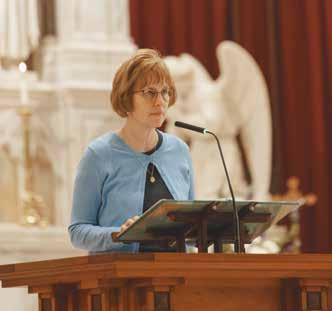
commented Rachel Peach, who took her final vows in 2016 and is part of Regnum Christi’s Cincinnati community. “It’s not obvious to someone that I don’t have my own bank account (poverty), that my heart, mind, and body are exclusively for Christ my spouse (chastity), and that I’m a missionary and can be sent almost anywhere in the world to serve (obedience).”
Their vows impact their lives in unexpected ways. Maria Reinagel dedicated her life to Christ in 1993 and explained that poverty affects more than her physical life, it also touches her spiritual life and her work. Reinagel said that in giving herself to the Lord in poverty, He “meets poverty with providence” and always provides for their needs.
The Regnum Christi Federation is an apostolic body in the Catholic Church whose mission is to make the Kingdom of Christ present today. As a member of this Federation, the Society of Apostolic Life “Consecrated Women of Regnum Christi” defines

itself as “a society of pontifical right, approved by the Holy See, with women who live the evangelical counsels within international communities.” The Federation also includes the Legionaries of Christ (priests), lay consecrated men, and single and married lay men and women. Whatever their vocation or work, they are members of this international spiritual family working to bring Christ’s love into the world.
Reinagel explained that being a member of this large movement is like “being a part of an amazing orchestra. I might just be a tiny penny whistle but my community across the world is a great symphony.” We live and work in the world so that we can accompany others on their walk with Christ on a relational level.
It's like being a part of an amazing orchestra. I might just be a tiny penny whistle but my community across the world is a great symphony.
Each Consecrated Woman is assigned to a specific apostolate and thus lives out her mission differently. Their daily work varies according to where Christ calls them: some teach, others work in offices or parishes, some provide spiritual direction, vocational and youth ministry, and many serve additional apostolates. Their vow of obedience requires that they heed their director’s decisions regarding their mission and community, but their own prayer, discernment, and talents are usually taken into account.
With every apostolate, however, Regnum Christi’s mission prevails: “It’s not so much what I do, but who I am doing it with. Living with the experience and certainty of Jesus as your spouse, sharing His mission, and following Him as He enters into the lives of the people you encounter every day is what it’s all about,” explained Peach.
The lives of the Consecrated Women of Regnum Christi look familiar, yet are curiously distinct from that of an everyday layperson. While they share the same call as all the baptized—to make present the Kingdom of God on Earth—they answer it in their unique way, living in community and fully dedicated to evangelization.






JAMES RAHNER
Deacon Adam Lewis is well aware of the mystery in his vocational story. Preparing for his ordination to the priesthood on May 17 with Deacon Kevin LeMelle, Deacon Lewis noted wryly, “There are people who have been in seminary longer than I’ve been Catholic.”
Raised in a Christian household, Lewis entered the Catholic Church in 2016. He didn’t know any priests prior to joining the Order of Christian Initiation of Adults (OCIA). Before OCIA ended, he felt called to the priestly life and entered seminary just two and a half years later.
LeMelle, however, first felt the call to priestly life at 19 years old: “It was in my mind almost every single day.” However, he entered the seminary a full seven years later. Doubt arose after he entered, so LeMelle paused his formation to consider other religious orders, but the break brought a confidence that the diocesan priesthood “is where the Lord wants me to blossom and bloom.” He describes the sense of assurance, from the first stirrings in his heart through the next seventeen years, as a “quiet, persistent call.”
Ordained as transitional deacons in April 2024, Lewis, of St. Columbkille parish in Wilmington, and LeMelle, of St. Bernard parish in Springfield, found in the diaconate new opportunities to say “Yes” to the Lord. Deacon Lewis
compares the diaconate ordination to the sacrament of marriage and ordination to the priesthood as a kind of initiation into parenthood. “We’re about to give birth to a parish full of children,” Lewis laughed.
Deacon LeMelle describes the diaconate life as one that is “fit, natural, and secure,” where he’s gained an irresistible sense that he is “meant to be in a parish setting.” He is on track to complete 60 baptisms by the time he is ordained a priest.
Although this 2025 ordination class of two is smaller than the sevenman ordination classes in 2023 and 2024, Deacon Lewis notes that this highlights the mystery present in the call. Acknowledging the challenges that come with this vocation, Lewis said, “It doesn’t take long to realize you’ve been led into the desert,” but also noted that there is grace present throughout.
Both men are eager for their journeys to reach the high point of ordination in May and for new opportunities to say “Yes” to where God calls them. Looking forward, Deacon Lewis asks for prayers that, as priests, they may be “defended against evil and kept close to Christ.” And Deacon LeMelle prays that he may “go through all the doors the Lord opens.” After a lifetime of preparation leading to priestly ordination, the men are ready to advance in service to God.


on your well-deserved retirement! Your dedication and service to our youth will leave a lasting impact. Our prayers for God’s continued blessings are with you!






















M. MARIE-CÉCILE OF THE TRINITY
When I was young, a priest spoke of Our Lady with these words: “The greatest prayer you can offer in this life is for the grace to give the Holy Spirit the freedom to do with, in, and through you whatever He wishes, as Our Lady did in her Fiat. She simply wrote God a blank check and let Him fill in the amount, signing her name at the bottom.” I thought of this a lot and wanted to make this prayer my own.
Born in Cincinnati, I grew up in Anderson Township, was baptized at Immaculate Heart of Mary, and later attended St. Thomas More in Withamsville, where I made my First Communion and Confirmation. As a child, I accompanied my grandmother Rose Marie to her Legion of Mary meetings and wove crowns of flowers there for Our Lady’s statue. As I grew, I often joined her for daily Mass. My grandmother did not talk a lot about the faith, but she lived it deeply. I learned from her example.
When I was 11 or 12 years old, Grandmother’s best friend joined the Little Sisters of the Poor and gave my grandparents all of her religious books. Around this time, the Pilgrim Virgin statue of Our Lady of Fatima came to St. Thomas More church. While I cannot fully describe what took place, it was as if her maternal hand took hold of my heart. After this encounter, I often found myself in my grandparents’ basement reading about the saints’ lives and asking, “Who is Jesus Christ to me? Would I die for Him? What is the point of my life? Who is God?”
One Friday evening in a prayer group at St. Joseph’s, two sisters from the Blue Army Shrine in New Jersey were passing through and shared that they were taking young girls to Fatima. I turned to my mom and said, “I think I’m supposed to go to Fatima,” not fully knowing what that
meant. My mother looked at my 12-yearold self and said, “We’ll see.” Even though I was underage, my mother and the sisters allowed me to go.
At the Cova de Ira, a sister instructed us to ask Our Lady what she wanted of us, as the children of Fatima did—I felt that God was asking for everything I had. At a saint’s tomb we heard about Pope Saint John Paul II’s reminder of “the universal call to holiness.” I had thought that saints were far above and beyond the rest of us, but I realized that day that a saint was simply a true friend of God, a great lover, and that the only perfection worth desiring is that of the heart.
I graduated from Anderson High School in 1998, led a normal teenage life full of activities and challenges, then entered the convent in New Jersey. After two and a half years, I transferred to a Carmelite cloister, where I loved the quiet and hidden life. Seventeen years later, however, I felt a tug at my heart, and the need to respond to “a call within a call” coincided with many changes in my community.
I have learned never to tell God what you do not want to do. He may ask you to set out into the deep and do that very thing for which you do not feel worthy or qualified. Without surety and without safety nets, I returned to Cincinnati. I didn’t know what Wi-Fi was; I didn’t have a driver’s license; I’d never written a check. But I knew that we no longer lived in a Christian culture and our youth needed religious to inspire and direct, as I was blessed to experience in my own adolescence. With permission from my Order and a blessing from Archbishop Schnurr to discern, here I am still—26 years later—with a community of women striving to build something beautiful for God and for your families: one heart, and sometimes one brick, at a time.

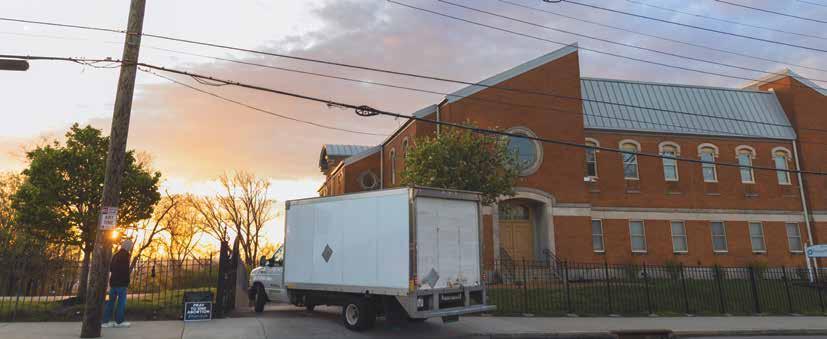
HANNAH LANGDON
This Lent, Catholics across the archdiocese again joined 40 Days for Life—an annual campaign to pray outside of abortion businesses. This year, going beyond the campaign’s usual daytime hours, Adam Schad and John Beckstedt organized 78 men to fill the nighttime hours, enabling a 24-hour prayerful presence outside the Planned Parenthood on Auburn Avenue.
There’s an incredible view of the sunrise behind this Planned Parenthood. Those praying on the sidewalk from 7:00 to 8:00 a.m. pause in their rosaries to gaze at the sky and contemplate the juxtaposition. A medical waste truck pulls through the gates next to the stark brick building; covered windows hide what happens inside. Rising above that, streaks of pink and orange light up the sky as a reminder that God’s creation is beautiful.
Early each morning, Planned Parenthood employees begin arriving, lunch boxes in hand; those praying by the gate often say good morning. The workers hurry past. At midday, traffic flows steadily up and down Auburn Avenue. Passersby witness small groups standing outside the fence praying, some sharing pregnancy center resources with women who are walking in. Passing cars sometimes honk in support. Others express disagreement.
Pam Bucher, who coordinates Old St. Mary’s involvement, said she’s never experienced a dangerous situation on the sidewalk, and confrontation is rare. It’s a relatively quiet part of the city, down the street from Christ Hospital, Holy Name Catholic Church, and two pregnancy centers.
Bucher has prayed outside Planned Parenthood for years, since she was pregnant with her first child. “I felt that life in my body—it awakened in me such a fire to fight for the babies nobody fights for!” she explained.
Praying in front of Planned Parenthood isn’t a dangerous act in Cincinnati, but it is a profound one. Bucher shares that it can be intimidating to look at someone as she walks in to have an abortion, but we need more encouragement to get the Church involved.
As the sun sets behind the apartments across the street, workers leave through the gate, avoiding eye contact. The watchers offer silent prayer that the workers will awaken to abortion’s harm. “Be a quitter!” is written in chalk on the sidewalk, to encourage their conversion, along with the phone number of a ministry that helps abortion workers escape the industry.
At 1:00 a.m., Auburn Avenue is mostly still. Drivers
passing by see the men standing outside, keeping vigil. Only the street lights break the darkness, and the men’s occasional hymns in prayerful petition break the silence.
“If we’re not there, we’re saying it’s not that important,” said Mary Clark, Cincinnati’s 40 Days for Life campaign coordinator, noting that, like any civil rights effort, the pro-life movement needs to show up where the injustice is happening. Physical presence is crucial to Catholic witness—a symbol of Christ’s Presence with us. We should be encouraged after the Manhattan Planned Parenthood’s recent closing, Clark said. “If it can happen there, it can happen here.” We just need to show up, watch, and pray.

On April 13, the current 40 Days for Life campaign concluded with a prayer service, but a broader vigil, 40 Days for Life 365, was initiated on April 14. It aims to have a prayerful presence outside Planned Parenthood every open business hour throughout the year. For more information or to join, go to www.40daysforlife.com/en/cincinnati.




May you utilize your God-given gifts and talents in service to others while holding true to the characteristics of a St. Xavier


The Eucharist is more than a sacrament—it is a source of strength amid life’s greatest challenges. For parents raising children with special needs, the Church can be a refuge and a reminder that no one walks alone.
Cincinnati resident Laura Nanista knows this well, as she strives to navigate the complexities of caregiving with a heart rooted in Christ’s love. “Only Jesus can provide the peace that transcends all understanding,” Nanista shared, referring to Philippians 4:7. “When I receive the Eucharist, I feel that peace.”
For Nanista, a mother of two, whose 16-year-old son has special needs, faith fuels her mission to create a more inclusive Church. She’s felt the struggles special needs families face within their parishes. Her son’s journey has been intertwined with the sacraments from the day he was born. He was baptized at the hospital just after birth in an urgent celebration because doctors were unsure of his survival. His First Communion was carefully planned and practiced with the help of well-formed parish staff to accommodate his feeding tube. And his reception of Reconciliation and the Anointing of the Sick also required thoughtfulness and adaptation, but through it all, the Church provided grace.
Nanista praises the Archdiocese of Cincinnati’s “All Are Welcome, All Belong” initiative that works to ensure every person is welcomed as an equal member of the Church. As the facilitator for St. Gertrude Church’s “Moms of Special Needs Support Group,” she goes beyond advocacy to actively build community. “My primary role is to find caregivers of children with special health care needs and facilitate ways to share experiences and faith,” she explained.
Nanista sees her work as a reflection of Mary’s own journey. “I feel my mission is to model Mary as best I can in raising children with special health care needs. Due to my sinfulness, this is a challenging task. However, I can relate to Mary’s sorrow and suffering, and that provides much insight and solace.” She is currently creating a special rosary for mothers

of children with special needs, offering a new way to pray through their unique challenges.
Through her work with the archdiocese’s Office for Persons with Disabilities, Nanista has seen that the Church can make a tangible difference. From advocating for accessibility to providing sensory-friendly Masses and launching a “Mental Wellness” ministry, this office is transforming lives. “Most importantly, they provide support to those in need,” she said. “I hope many people will visit their website and sign up for their newsletters so that true belonging in the Church can be possible.”
Nanista’s message to others with disabilities is one of hope: “You are a beautiful and intentional creation of God with innate dignity. Nothing that you do, don’t do, or are unable to do will keep you from God’s love. Though we may not ever know why God made us this way, there is a reason. You are not broken or a mistake. God has great things in store for you.”
As the Church embarks on this Jubilee Year of Hope, Nanista’s story is a powerful testament to the Eucharist as both sustenance and mission. In the breaking of the bread, Christ makes Himself present to all. And through their suffering, advocacy, and faith, families like the Nanistas remind the Church of its call to love without limits.
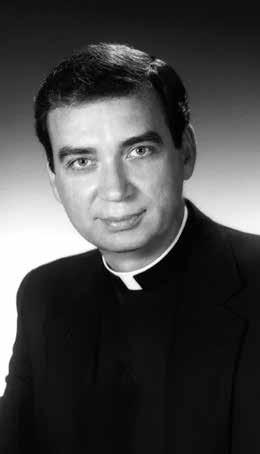


Dennis Marian Schnurr was born in Sheldon, IA, on June 21, 1948 and grew up in Hospers, IA. He studied for the priesthood at the North American College and the Gregorian University, both in Rome, and was ordained a priest for the Diocese of Sioux City on July 20, 1974.
After three years of parish ministry, he was assigned to graduate studies at the Catholic University of America from 1977 to 1980, where he earned a doctorate degree in canon law. He then served the Diocese of Sioux City as vice chancellor (1980-1981) and chancellor (1981-1985), finance officer (1980-1985) and judge of the diocesan Tribunal (1980-1985).
In 1985, Schnurr was assigned to the staff of the Apostolic Nunciature in Washington, D.C.
Archbishop Schnurr was appointed Associate General Secretary of the National Conference of Catholic Bishops/United States Catholic Conference (NCCB/USCC) in 1989. He supervised the work of the Conference in the areas of Catholic education; domestic and international policies; ecumenical and interreligious affairs; laity, family life and youth; migration and refugee services; and pro-life activities.
From 1991 to 1993, he served as the National Executive Director of World Youth Day
1993. Nearly 500,000 young people attended and Pope John Paul II presided. The pope personally made him a Prelate of Honor with the title of Monsignor.
In 1995, the bishops elected Monsignor Schnurr the General Secretary of the NCCB/ USCC. He oversaw the overall operation of the Conference, supervised a staff of approximately 350 people, managed an annual budget of $50 million, arranged meetings which brought together the bishops’ conferences of the Western Hemisphere, and participated in the semi-annual visits of the NCCB/USCC president and vice-president with the offices of the Roman Curia.
Archbishop Schnurr was named the eighth bishop of the Diocese of Duluth on Jan. 18, 2001 and ordained bishop April 2, 2001. Pope Benedict XVI appointed him Coadjutor Archbishop of Cincinnati on Oct. 17, 2008. He became Archbishop of Cincinnati on Dec. 21, 2009, when Pope Benedict accepted the resignation of his predecessor, Most Rev. Daniel E. Pilarczyk.
Archbishop Schnurr faithfully served the faithful of the Archdiocese of Cincinnati for 15 years. Pope Francis accepted his resignation on February 12, 2025. He plans to remain in Cincinnati in his retirement, serving the people of the archdiocese in any way he can.





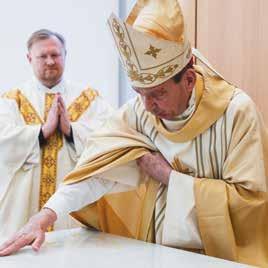

CLASS of 2025 – Coming to the end of your high school journey, take note of your growth and lessons learned at CJ. The memories can serve as comfort and a reminder that your classmates will be rooting for you as you face the next chapters of your lives. Know that you can always look to God for love and guidance. Thank you for your warm welcome into our community, your leadership, and the cherished time that we’ve spent together at the foot of the cross. May peace be with you all.
God Bless and Forever, Go Eagles!
Eric Daniel ‘26




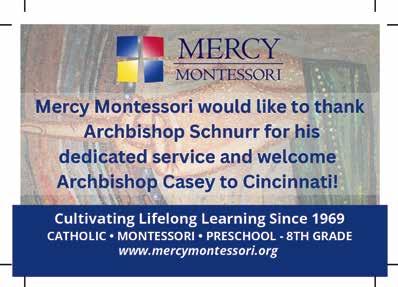

In gratitude for your service to the Diocese of Duluth, Bishop Daniel Felton and the faithful of the Diocese of Duluth congratulate
on your retirement


Mahlet Abay
Samantha Berehane
Kristen Bearwanger
Shelby Binder
Katherine Bowman
Andrea Bromfield
Isabella Browning
Molly Brunner
Giang Bui
Abby Campbell
Emma Chapman
Claire Childers
Madison Clouse
Diana Combs
Annika Compton
Camryn Conway
Payton Coop
Sophia Courtney
Meaza Dawit
Madison Dobbins
Madalyn Emery
Ava Engelbrink
Sarah Fellerman
Catherine Foster
Lauren Fox
Lucy Fulmer
Bianca Gonzalez
Chloe Hamilton
Abigail Hayes
Rachel Heinz
Anna Heitz
Isabel Hess
Amelia Hlebak
Marie Hoelzle
Sophia Hoffman
Kenya Howard
Sydney Kandil
Annabelle Keith
Ariana Kile
Alysa Klein
Alexandra Landin
Samantha Langefeld
Kaitlyn Leon
Yardley Leon
Shaylin Lester
Ali Lewis
Terri LunsfordColeman
Abby Montgomery
Madeline Montgomery
Caroline Moore
Ingrid Morales Nolasco
Lillian Niehaus
Halee Novak
Ruby Ortman
Sophia Pinotti
Vanessa Pitz
Mackenzie Ranz
Mya Rose
Lydia Sanders
Sofia Schaffer
Kaitlyn Senger
Ashley Sess
Abigail Sewell
Margaret Smith
Isabella Sweeney
Sydney Szempruch
Ka’Lijah Taylor
Dagemawit Tekeste
Kallie Toon
Audrey Uwera
Abigail Vance
Isabella Ventre
Erica Wade
Elaina Ward
Carly West
Lalah West
Katelyn Winiarski
Madison Zech

SEEING | Emma Cassani
In a visually saturated world, it’s easy to feel overwhelmed and become desensitized to beauty. Visio Divina, Latin for “divine seeing,” encourages us to slow down and engage in visual contemplation, using art as a profound tool for connecting with the Divine.
Begin by making the sign of the cross and inviting the Holy Spirit to guide your contemplation. Spend a moment meditating on The Calling of St. Matthew, ca.
1600 (Baroque Period) by Caravaggio, located in the Contrarelli Chapel at San Luigi dei Francesi, Rome. Then, read Matthew 9:9-13 (also seen in Luke 5:27-32 and Mark 2:13-17).
Michelangelo Merisi—more commonly known as Caravaggio, after his hometown in Lombardy—was born on September 29, 1571, on the Feast of St. Michael the Archangel. Orphaned by age 11, Caravaggio
was taken in by a painter in Milan, where he began to learn chiaroscuro and tenebrism, two dramatic lighting techniques that would become his signature.
Caravaggio would go on to become one of the most influential painters of the Baroque movement, known for his lifelike, theatrical, and emotionally charged depictions of the life of Christ and His disciples. But in sharp contrast to the sacred subject matter he often painted, his personal life was chaotic and scandalous. He was notorious for provoking fights, swindling money, carrying a sword illegally, and fleeing from murder charges. Perhaps most strangely—and somewhat comically—he once assaulted a waiter with a piping hot dish of artichokes after being displeased with his meal.
This begs the question: How could someone live a life at odds with the Gospel yet produce such spiritually rich art? Did the faith genuinely inspire Caravaggio, or was painting merely seen as a means to a profitable end?
Tucked away in a shadowy corner of an old tavern, a group of tax collectors huddle as outcasts, counting their earnings from the day. Slow and calculated, a man slides his money onto the wooden table—each coin landing with a hollow clink. Loose silver, ledgers, and the weight of greed clutter the space between them.
Suddenly, they are interrupted by a soft beam of light that spills into the tavern, slicing through its deep shadows. The light doesn’t flood the space; it only illuminates a few faces. Two men emerge from the direction of the light. One steps forward, barely. His face turned, his body halfconcealed behind the other. A hairline halo hovers over his head, so faint it could be missed. His robe blends into the shadowed wall behind him. This man, Jesus, seems hidden, nearly absorbed by the space. His hand extends—not in a grand gesture—something quiet yet deliberate. Between the viewer and Christ stands Peter, representing the Vicar of Christ, guiding the Church between her people and the Savior.
The beam of light above Jesus guides the viewer’s eye diagonally down to Matthew. Its source is unseen, reaching beyond the frame. Jesus is not the source of
You cannot make yourself a disciple—it is an event of election, a free decision of the Lord’s will.
light, nor is He brightly illuminated. Instead, the light comes from above—not from the grainy window—but perhaps, from God the Father.
Matthew, Mark, and Luke all write in the gospels that Matthew immediately rose and followed Jesus. Caravaggio, instead, lingers in the respite. Rather than leaping up, Matthew sits, one hand caught mid-count over the coins. His other hand lifts slowly toward his chest—not quite in disbelief, not quite in protest. His wide eyes remain calmly fixed on Jesus. He doesn’t speak, but the question is clear: Me?
This moment feels undeniably human: full of hesitation, vulnerability, and unworthiness. Still, Jesus waits. His hand, raised yet relaxed, echoes the gesture from Michelangelo’s The Creation of Adam. Except here, it is not the Father’s hand Jesus mimics, but Adam’s. Christ, the Second Adam, reaches into Matthew’s world of darkness, instant gratification, greed, and self-pity, and calls on him mercifully, drawing him out into grace.
Continued on page 32.


What does it mean to be a disciple, and how do we become one? Pope Benedict XVI offers a clear answer: “You cannot make yourself a disciple—it is an event of election, a free decision of the Lord’s will” (Jesus of Nazareth, 170). Discipleship isn’t a self-appointed title or an achievement. It begins with Christ’s call and becomes real only in our response.
But like Matthew, many of us feel unworthy of that call. We get caught up in our own distractions, doubts, and the weight of our sin. When Jesus calls, many of us respond with hesitation rather than confidence—mirroring Matthew asking the Lord: Me? Are you sure? The Gospel of Mark tells us that “Jesus called to Him those whom He desired” (Mk. 3:13). It is not about whether we feel worthy to receive His grace; it is about His desire for us. But in order to respond, we must be open to receive.
Caravaggio’s The Calling of St. Matthew beautifully reveals the tension within every human heart: the darkness of sin and shame, the mesmerizing light of Christ, and the quiet struggle between clinging to what we know or surrendering to what we truly desire.
I can’t help but wonder if Caravaggio, while painting this piece, saw himself as Matthew. He was an outcast, a fugitive on the run, and a hot-tempered man. Someone who wrestled with the allure of sin and seemed least likely to be called by Christ. Moreover, Caravaggio invites us into the painting by leaving room at the tax collector’s table. We can truly “enter in” and imagine ourselves in this scene. Perhaps the artist is asking: How would you respond to Jesus’ call?
Ratzinger, J. (2007). Jesus of Nazareth: From the Baptism in the Jordan to the Transfiguration .


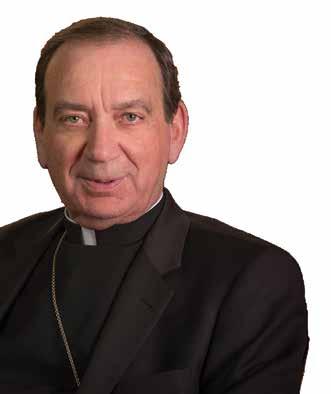






Archbishop-Emeritus Dennis M. Schnurr
ur Lord said to His disciples, “The harvest is abundant, but the laborers are few; so ask the master of the harvest to send out laborers for his harvest” (Mt. 9:37-38). This passage from Sacred Scripture was my inspiration for the Prayer for Vocations, which I first drafted as Bishop of Duluth in 2001 and updated in 2009 when I became Archbishop of Cincinnati.
During his 2008 visit to our country, Pope Benedict XVI addressed a question from the U.S. bishops regarding how to better encourage priestly vocations. He said, “Do not overlook the obvious. Beg the Harvest Master!” In this archdiocese, our prayers to the Harvest Master have borne great fruit. In my 15 years here, I have been blessed to ordain 70 men to the priesthood.
The Prayer for Vocations is not simply a means of asking God to send us more young people to serve the Church as priests or consecrated religious. Rather, it is a reminder that God has called each of us, personally, for a particular purpose in this life. He calls us to be sharers in His mission and He equips us to do our unique part for the entire People of God.
No matter your stage or state in life, God is inviting you to help build up His Kingdom. God has given you wonderful talents to share. The greatest peace, joy and fullness of life are found by putting those talents to work for the good of others in service to the Gospel.

Almighty Father, You have created us for some definite purpose. Grant us the grace to know the path You have planned for us in this life and to respond with a generous "Yes."
Make our archdiocese, parishes, homes and hearts fruitful ground for Your gift of vocations. May our young people respond to Your call with courage and zeal.
Stir among our men a desire and the strength to be good and holy priests. Bless us with consecrated religious and those called to a chaste single life, permanent deacons, and faithful husbands and wives who are a sign of Christ's love for His Church.
We commend our prayer for vocations to You, Father, through the intercession of Mary our Mother, in the Holy Spirit, through Christ our Lord. Amen.

When navigating the wild world of vocational discernment, there seem to be two prevailing strategies. One approach is to keep a meticulous regimen: swiping between dating apps and convent contact pages with disciplined rigor until God’s plan becomes plain. The other is to sit back and prayerfully wait for the stars to align. If you’re discerning, odds are you’ve oscillated between the two, depending on your energy level—and maybe how that last date went.
Regardless of your approach, you can rest in the knowledge that your fundamental vocation is to “show forth the image of God and to be transformed into the image of the Father’s only Son” (CCC 1877). Discovering your vocation is not just a dream to be achieved, nor is it a life that will be handed to you. It is the daily affair of allowing your heart to be drawn and molded into Christ’s heart. So, whether you think you may eventually be called to conform yourself to Christ as a spouse or as his spouse, you can begin today, in ways small and large, preparing for that future.
A great first step in imaging Christ is to follow in His mother’s footsteps. Mary received and beheld Jesus in her own body, and you, too, can receive and behold Him in the Eucharist. While in Adoration, ask for His heartbeat to animate and organize your life; for His cares to become your own. Perhaps commit to a midnight holy hour to prepare you for the day when you are called to behold Christ in a person in need or in a restless infant. Through the Eucharist, you can be formed in the way of love so that you too may become nourishment for others—as Mary was for Jesus and as Jesus is for us.
As a further step, we do well to guard against the temptation to allow our spirituality to be defined only by comforts and consolations. When Mary was pregnant she did not remain in the comfort of her home. Rather, she journeyed to take care of her cousin Elizabeth. Let us follow this example, making a Eucharistic gift of our lives through works of mercy and by discovering Christ’s face in those living beyond our socioeconomic boundaries.
Discernment can be difficult. Being uncertain of your vocational call can be isolating. It is a grace, then, that we need not walk this path alone. We can find friends in the Church’s female saints, who often traveled unexpected vocational paths. Learning about their lives and asking for their intercession can help you discern your own vocation. For examples of perseverance, read the martyrdom of Saints Perpetua and Felicity. Or, encounter the tender heart of Catherine of Siena in Sigrid Undset’s biography of her life. Find in the letters of Saint Zélie Martin the witness of a woman who adored her family, was bold in her faith, and ran a business. The list goes on.
The path ahead may be uncertain, and pursuing your vocation will likely carry risks, for to follow the way of Mary and Jesus is to follow the way of the Cross. Hold fast, however, to the promise of the Cross, knowing you are in good company and it is a worthwhile endeavor. In Jesus Christ, and indeed in every saint, we find a testament to the reality that even under the heaviest of crosses, the joy of eternal love is found.
To follow the way of Mary and Jesus is to follow the way of the Cross.
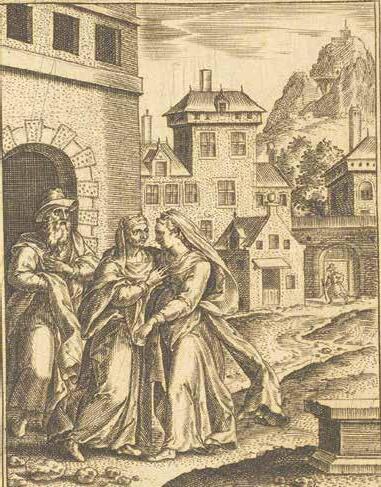


NET Ministries is delighted to welcome Archbishop Robert G. Casey!
We are deeply grateful to Archbishop Schnurr for his many years of dedicated partnership with us.
We look forward to continuing to challenge young Catholics to follow Jesus Christ and embrace a life of community in the church.
Learn more at netusa.org




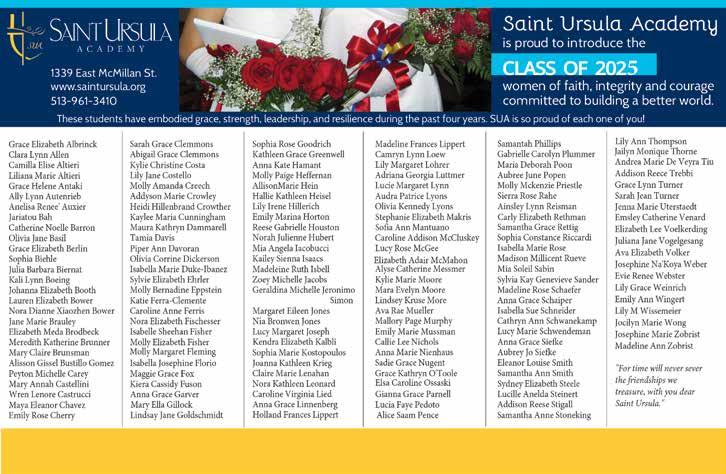

Celebrating the Installation Mass of Archbishop Robert G. Casey
On April 3, 2025, the Most Reverend Robert G. Casey was installed as the tenth Metropolitan Archbishop of the Archdiocese of Cincinnati at the Cathedral Basilica of St. Peter in Chains, succeeding the Most Reverend Dennis M. Schnurr. The Mass of Installation was a jubilant occasion, gathering about 160 priests and 80 deacons of the archdiocese in a celebration of spiritual fraternity, optimism, and joy. The Mass was celebrated in the presence of His Eminence Christophe Cardinal Pierre, Apostolic Nuncio to the United States. He was joined in the sanctuary by His Eminence Blase Cardinal Cupich, Archbishop of Chicago, Archbishop Dennis M. Schnurr, and more than 30 visiting archbishops and bishops from around the United States. Government officials, representatives from every parish in the archdiocese, as well as representatives from other Christian faith communities and non-Christian traditions also attended to witness this historic occasion.
Archbishop Casey has been an auxiliary bishop for the Archdiocese of Chicago, where he was born and raised, since 2018. After obtaining a bachelor’s degree in English from Chicago’s Loyola University in 1989, Archbishop Casey entered Mundelein Seminary, from which he earned his Master of Divinity degree in 1994. On May 21, 1994, he was ordained to the priesthood by the former Archbishop of Cincinnati, the late Joseph Cardinal Bernardin, then Archbishop of Chicago. The son of Irish immigrant Michael A. Casey and Margaret A. Carmody Casey, both deceased, the new Cincinnati archbishop is a proud son of Ireland, to which he plans to return in October to run a marathon. Active in Hispanic ministry in Chicago, Archbishop Casey speaks Spanish fluently. This was reflected in Archbishop Casey’s concluding words of gratitude which he shared in both Spanish and English.
Archbishop Casey’s inauguration homily emphasized the rich symbolism of the occasion, combining personal anecdote with rich theological reflection. Drawing upon the legacy of St. Peter the Apostle and his own growth in discipleship, the new Archbishop began by describing his difficulty learning to swim as a young boy. “Attempting to float” in the shallow end of the pool, he explained, he instead sunk “like a rock.” Coughing up water, young Robert looked ruefully toward his older brother in the deep end, diving off the high board to the adulation of all those around him. Gradually learning to swim—and making his way to the deep end of the pool—serves as a metaphor for Archbishop Casey’s growth in his own discipleship with Christ, and encouragement for ours.
In the Gospel of St. Matthew, Jesus told his apostle Simon that henceforth he would be known as “Peter,” the anglicized version of the Greek word for stone, “petra” (Mt. 16:18). “Upon this rock,” Jesus declared, “I will build my Church, and the gates of Hades shall not overpower it.” Thus did Jesus establish the office of the bishop (Greek: “episcopos”), the living magisterium through which God guides his Church into the fullness of truth. While we rightfully think of the Bishop of Rome as the successor to the See of Peter, every bishop stands in succession to St. Peter and the other apostle-bishops to whom Jesus granted spiritual authority (Mt. 18:18). Thus, all bishops are participants in the united apostolic and episcopal ministry of St. Peter.
Preaching from the ambo of St. Peter’s cathedral, Archbishop Casey built upon the image of St. Peter as a rock to draw out a lovely extended metaphor. “What confidence Jesus had in Simon Peter,” the archbishop exclaimed, “that Peter would have the strength and stamina, the
resolution and the resolve, to bear the weight of the Church.” As Jesus entrusted the care of the Church to St. Peter the rock, so he extends that trust to Peter’s successors to bear the heavy burden caring for souls.
Yet, Archbishop Casey reminded the hushed congregation, St. Peter was very far from perfect. He denied knowing Jesus, for example, and fled from the crucifixion to take shelter in Galilee (Mk. 16:7). And, like the young Robert Casey, Peter sometimes sunk like a rock. As recounted in Matthew 14, when his eyes of faith looked away from Jesus, Peter began to flounder in the waves of the Sea of Galilee. Only after his eyes were refocused on the Savior was Peter able to rise to become a “living stone,” walking toward
Jesus, rather than sinking away from Him like an inert rock. And thus, rising to the occasion, did Archbishop Casey weave together three biblical images from the life and letters of St. Peter, in whose Cathedral he preached and in whose chair he now sits.
Like the Church throughout the U.S., the Archdiocese of Cincinnati faces many challenges today. But with Jesus as the Cornerstone, and His bishops, priests, and laypeople as living stones, we have reason for hope and optimism. With his youth, vigor, and humble discipleship, we pray that Archbishop Robert G. Casey will find the strength and resolve to lead us forward so that we don’t sink in the shallow end, but swim confidently into the depths of faithful discipleship.


The Very Reverend Steven P. Beseau, Rector/President, and the seminary community of the Pontifical College Josephinum welcome and congratulate
The MosT ReveRend RobeRT G. Casey Archbishop of Cincinnati and honor with deepest gratitude
The MosT ReveRend dennis M. sChnuRR for his faithful service to the Church
Forming holy, generous, adaptable and resilient priests for the 21st century. COLUMBUS, OHIO | PCJ.EDU
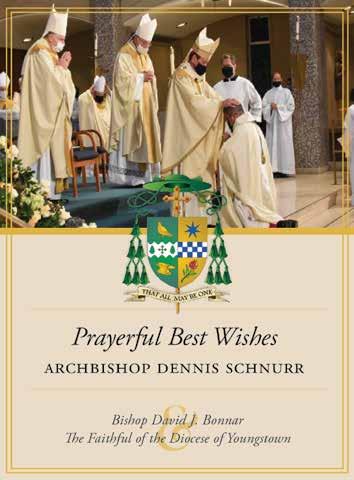

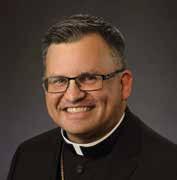
Catholic Charities Southwestern Ohio extends its heartfelt thanks to Most Rev. Dennis M. Schnurr for his 15 years of dedicated leadership and service to the Archdiocese of Cincinnati. We are deeply grateful for his unwavering support of all our ministries to the poor and vulnerable. We wish him all the best in his well-deserved retirement.
We also warmly welcome Most Rev. Robert G. Casey as the newly appointed Archbishop of Cincinnati! We look forward to working together in our mission of mercy across the counties we serve within the Archdiocese.
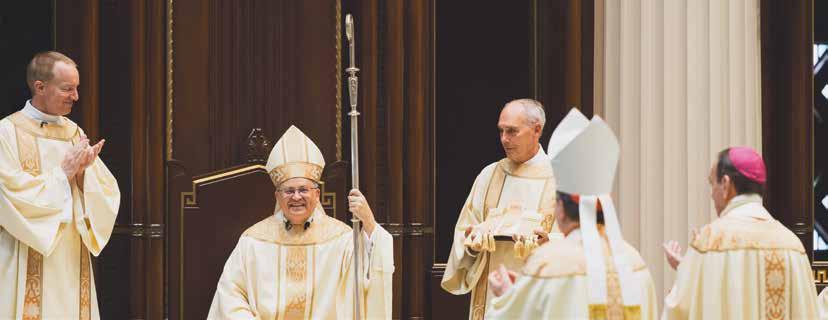
COLIN RAHILL
Just a week before the Mass of Installation of the Most Reverend Robert G. Casey as Archbishop of Cincinnati, I had the opportunity to interview some of the people who know him best—three of his siblings. His oldest brother, Mike; his sister, Pat (a Franciscan sister); and his brother and childhood roommate, Rich, shared memories of growing up with “Bob,” as they still affectionately call him. From their blue collar Catholic upbringing in the suburbs of Chicago to the quiet moments that hinted at a future vocation, their reflections offer a heartfelt glimpse into the family and faith that helped shape our new archbishop.
Were there any early signs that he might have a calling to the priesthood?
Mike: We grew up in a large Irish Catholic family in the south suburbs of Chicago. Our mother and father each came from large Catholic families. So, family—and Catholicism—was part of our childhood experience. That childhood experience certainly included the Catholic Church. St. Terrence Church was within easy walking distance of home. Every Sunday morning included three things: (1) Mom getting five kids up and dressed; (2) going to Sunday morning Mass as a family;
and (3) Dad making a big family breakfast once we got home.
We didn’t have much, but we always had enough, and the Church was a constant. I was the eldest and had more interest in baseball than becoming an altar boy— but becoming an altar boy at St. Terrence Church was a natural step in Bob’s religious journey. I have been in the congregation watching Bob around the altar since he was eight!
Continued on page 44.
Continued from page 43.
Pat: There are five of us siblings. Bob and I are the two who followed the path of a religious vocation. We grew up in a family that went to Mass every Sunday, said grace before meals, and prayed together before going to bed at night. Faith was always a part of our lives.
Rich: Looking back on growing up, in hindsight Bob’s calling makes perfect sense. But while growing up, I honestly didn’t see any early signs. Bob and I shared a room for about
20 years of our lives. I don’t think his religious dedication was much different than the rest of the family: We said prayers before dinner and at bedtime, we went to Mass every Sunday, and we were both altar servers. Now I can see how his ability to connect with people, his genuine caring, his ability to speak and teach, his cherishing of tradition, his humility… These are all signs and characteristics that make the religious life a perfect fit and calling for Bob to make a difference in the world.
What motivated or fascinated him?
Mike: Rather than one particular hobby or passion, Bob was always willing to try something new. He may not remember it this way, but he has always had the courage to take on new challenges. That courage led him to wilderness paddling trips in Quetico Provincial Park and Isle Royale National Park, backpacking and hiking trips on the Superior Hiking Trail and the Camino, completing five marathons, and taking on new roles as a priest and a bishop.
Pat: We all loved to read, and reading was one of Bob’s passions. Like our grandfather, Gerald Carmody, Bob has always been a gifted storyteller with a great imagination. He loves to laugh, and he has that wonderful smile with those dimples.
Rich: The one hobby that comes to mind in relation to his gifts as a priest and bishop is his interest in theater. His comfort with being “on stage” and telling a story was a start to honing his skills as a preacher.
Mike: To watch our brother Bob become a priest, lead a parish, speak fluent Spanish, step into leadership positions, and now become the Archbishop of Cincinnati is a reminder to our family that the Casey family story is still being written. Bob consistently reminds our family that there is a place for kindness, love, compassion, joy, humility, integrity, and civility in the world. We just need the courage to stand up for those important values that we first learned so many years ago from our parents and in St. Terrence Church.
Pat: Saying yes to his vocation. He has also gifted us with such memorable Masses like those marking our parent’s 50th wedding anniversary and the renewal of their marriage vows.
Rich: Two relatively recent events come to mind first. When our mother died almost nine years ago, and when our father died just last December, Bob was the one to preach at the wake, the funeral mass, and the burial. That made those difficult times a little easier for me, when it was my brother telling stories, reminding me of how they’re never truly gone, and holding my hand and theirs as he helped guide them to the Hands of God.
Mike: Growing up, we always enjoyed long weekends on our grandparents’ farm in southeastern Michigan—tractor rides, pruning grapevines and picking weeds, hiking to the pine forest, and big family energy. We also drove north every summer for camping and fishing vacations. I have lasting memories of many card games and board games with Bob around various kitchen tables.
Pat: Our family vacations were spent fishing. Because there wasn’t enough room in our boat for all five of us children, Bob and I fished in another boat with Mom’s youngest sister, Aunt Gerry and her husband Jim. We grew close to them, and later, when they had their first child, they asked Bob and me to be the godparents.

OUR PRAYERS OF GRATITUDE
go with you, Archbishop Schnurr! &
We welcome the opportunity to serve the Archdiocese with you, Archbishop Casey!

The Most Reverend Edward M. Lohse and the Diocese of Steubenville offer their Heartfelt Congratulations and Prayerful Best Wishes to Archbishop Dennis Schnurr on the occasion of his Retirement.
Rich: My fondest memory is when Bob would make up stories to tell me at bedtime after lights out. “The raisin and the grape” was an ongoing series of adventures for those two characters I would listen to on many nights. On the other hand, I can certainly remember us putting down tape in the middle of our room to separate “my side from your side” when sharing became too much for two brothers to manage. There were also the Sunday nights when we’d have popcorn and watch “Wonderful World of Disney” movies. I can also recall Christmas mornings with Bob, waking each other up to go downstairs and see what was in our stockings.
Continued on page 46.
The Congregation of the Sisters of St. Joseph
offer congratulations and blessings to our Associate, dear friend, and long-time supporter,
Archbishop Robert Casey
as you begin your faith-filled service to the Archdiocese of Cincinnati.
We celebrate and thank Archbishop Dennis Schnurr for your dedication and years of service, and pray for and with you as you begin your retirement.

CSJoSeph org
Continued from page 45.
How have you seen your brother grow over the years? Are there particular challenges you’ve seen him face and overcome?
Mike: Over the years, I’ve watched my brother grow in confidence through time, experience, and maturity. As his older brother, that’s been a wonderful thing to see. He has always had strong Catholic values, but now, in addition to living them, he is able to speak to those values with parishioners, priests, and community leaders.
Pat: It is very special for me to have a sibling I can talk to about living the faith, following Christ, spiritual direction, silent retreats, scripture reflections, and prayer practices. Both of us have experienced the joy of the Gospel and the Way of the Cross.
Rich: Bob has overcome numerous challenges throughout his life. His perseverance and resilience are remarkable.
As
a priest, Archbishop Casey is called to be another Christ. How have you witnessed him living that out? In what ways have you seen Christ in him?
Mike: Bob is always willing to discuss his beliefs and faith with anyone—fellow Catholics who share the same beliefs, Catholics with a different point of view on the Church’s direction, lapsed Catholics who have stepped away from the Church, and community members from other religions with other beliefs. Bob listens well and can have a civil, respectful, and productive dialogue with people from all walks of life.
Pat: Bob is a man in the middle—not just Christcentered but standing at the center and reaching out to embrace all, inviting us to meet him in the middle instead of dismissing each other through division and polarization.
What virtues and focus areas do you think your brother will bring to his new role as Archbishop of Cincinnati?
Mike: I have no doubt Cincinnati, the surrounding region, and all of Ohio will love Bob.
1. He shows up—you will see him in the community.
2. He cares—never doubt that.
3. He’s not afraid—he’ll stand up for Catholic values.
4. And his smile—you’ll love his smile!
Pat: He is a good listener and leader. He is honest and humble. He will walk in synodality with the people of Cincinnati.
Rich: His ability to dialogue. Whether you agree or disagree, Bob is always open to having the conversation, not for the purpose of telling someone they’re wrong, but quite the opposite—to create a place where dialogue and sharing perspectives are welcomed and encouraged. He is always willing to engage, even with those who clearly disagree with the Church today. Replacing a “right vs. wrong” mindset with a place for dialogue and learning and hearing each other is a virtue all leaders need. Bob will bring that virtue to the archdiocese.
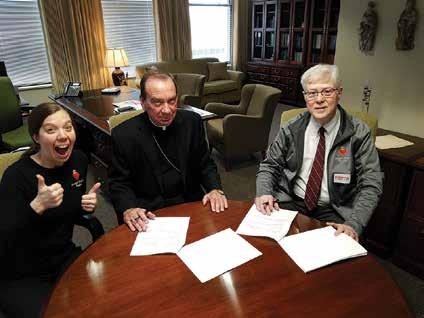









Susan Bergman HARM



For Mary Catherine Levri, music has never been just a skill or a profession—it has been a vocation intricately woven into her personal and spiritual life. As the Director of Music at Mount St. Mary's Seminary & School of Theology, she has dedicated her life to the study, practice, and teaching of sacred music, and this has helped guide her and her students into a deeper communion with God.
Levri’s journey with music began in an unassuming way. As a child, she was first inspired by a friend whose father was an organist. Watching her friend play sparked an early desire to learn. She began piano lessons taught by two neighbors. Music became a steady presence in her life, nurtured by those who saw her potential. Today, Levri knows that Divine Providence was at work in these early years.

While earning her Doctorate of Musical Arts in organ performance from the University of Notre Dame, Levri found a musical family in Craig Cremer, Professor of Organ, and his wife, who led a liturgical choir. Their guidance refined her ear and expanded her appreciation for the sacred and technical dimensions of music, reinforcing her belief that music was not merely an art form but a vessel for theological expression. Sacred music, she says, has the ability to communicate profound theological truths: “When people encounter beauty in liturgical music, they are compelled to believe, not just intellectually but with their hearts.”
Today, Levri teaches courses in voice, music theory, and music history while also serving as Associate Professor of Music and Pastoral Studies. She sees music as a powerful force in vocational discernment. While some seminarians arrive with natural musical gifts, others must develop their abilities through practice. She has worked with students who initially struggled with singing but, through patience and repetition, found their voice. Beyond technical ability, she values the discipline, humility, and transformation that come with persistent effort. “Even more than being able to sing, I appreciate the process and hope it’s something they can
take back to their parishes,” she shared.
Levri describes choral music as an expression of unity and divine intervention. As she conducts choirs, she experiences moments of awe when a group of individuals, each with his or her own unique voice and life experiences, unite to create a single, resonant sound. “Despite the potential for discord—coughing, sneezing, or missed notes—there are moments when everything aligns, and the Holy Spirit moves through the music, transforming it into something truly transcendent.” She added, “This is a reflection of vocation itself: an offering to the Lord, imperfect yet beautiful in its sincerity.”
There are moments when everything aligns, and the Holy Spirit moves through the music.
Quoting composer James MacMillan, Levri said, "Music is one of the most spiritual of all the arts, an invisible presence—where the body meets the soul." The act of making music calls for both technical precision and spiritual openness. She named Come, Thou Redeemer as her favorite hymn, a piece attributed to St. Ambrose. She treasures it for its poetic expression of Christ’s dual nature—both divine and human. "These complex truths about the nature of God can only be communicated as beauty. It compels you to believe it because it is beautiful," she explained.
Levri describes her lifelong relationship with music as a light for her path: “It has been a means of doing good, making a living, and most importantly, co-creating with God.”
CATHOLIC AT HOME | Katie Sciba

I know my pastor well, for a parishioner. My husband and I were friends with him years before he came to our church. Father Anthony’s sense of humor is clever; he keeps a clean house and an even cleaner office; he’s grounded and compassionate; and he’s a movie buff with strong opinions on plot and characters. So, Andrew and I have come to know him well as a person, but I recently saw Father Anthony the priest in a brand new light.
I confess that even as an adult I’m distractible; my mind strays easily from praising the Lord for the gift of the Eucharist to admiring a woman’s shoes. As I knelt on this day, praying in the first pew after receiving Holy Communion, my eyes drifted to Father Anthony distributing the Eucharist to the faithful, and my gaze and attention remained fixed. While normal in every respect—Father repeated the same declaration to each person, “The Body of Christ. The Body of Christ…”—the Lord opened my eyes to how extraordinary it was.
With near-terrifying clarity, I realized that this dear friend of ours holds responsibility for work that is far more spiritual than earthly. His task is to lovingly invite every person to Christ, while also imitating Christ and praying for the grace to do so. The Lord brought to light the terrific weight of my pastor’s burdens, and the bravery and holiness necessary to endure them. I understood, too, that Mary looks at him with the same maternal affection she has for her Son. The whole revelation was a lightning strike, fast and powerful, and my eyes immediately filled with tears. There is so much strength required of Father Anthony’s soul, which is as fragile as everyone else’s.
I already knew that the priesthood is a big undertaking—a supernatural vocation with an endless and weighty to-do list. This experience, however, graced me with a deeper understanding that became an urgent call to double down on
prayers, not only for priests, but specifically for our pastor.
So, I invited six women to join me in the Seven Sisters Apostolate, a widespread effort now present at many parishes across the map, wherein each member prays one holy hour on a different day of the week to cover our pastor or a parish priest (Father Anthony for us) in prayer. Each of us experienced a light bulb moment after we started. “I never thought of what it took to be a priest before now,” my friend Lauren told me. “Father Anthony’s priesthood is sacred,” Erin texted me, “Thank you so much for asking me to do this.”
During my holy hour for Fr. Anthony, I pray through Tina Jost’s One Hour for My Priest: A Prayer Companion and might pray a Rosary or ponder the Mass readings as I ask the Lord to give Father graces from those particular scriptures. I pray for an increase in his devotion to Mary, for an increase in his righteousness and humility, and that he will live as an unmistakable imitation of Christ. The time passes as profoundly as it does easily; each time, I’m struck by the magnitude of Father’s ministry and how each priest’s vocation has a ripple effect on his community.
The laity have an irreplaceable role in supporting our shepherds through prayer. Priests carry immense spiritual responsibility, guiding their communities, administering the sacraments, and offering counsel. Their vocation’s demands are challenging, and like any other person, they may face moments of doubt, fatigue, or spiritual dryness. In praying for priests, we can help strengthen them in their life’s work. Prayer for them also builds a deeper connection between the faithful, clergy, and Holy Trinity, ultimately fostering unity within the Church. Begin now, whether you gather fellow parishioners to each commit a holy hour one day of the week or you pray on your own, the Lord will bless and multiply the prayers offered for the men who serve us.








cathedral is the home church for the bishop or archbishop of a Catholic diocese. Ten bishops have served Catholics in the Archdiocese of Cincinnati, and their ministry is intertwined with the history of the Cathedral Basilica of St. Peter in Chains. This is part three of those archbishops’ histories. Part two is found in the April issue of The Catholic Telegraph.

A native son of the archdiocese, Daniel E. Pilarczyk was born in Dayton on August 12, 1934. Ordained to the priesthood in Rome in 1959, he later earned doctoral degrees in sacred theology and classics. In 1974, he was named Auxiliary Bishop of Cincinnati to assist then Archbishop Bernardin, and on December 20, 1982, he was installed as Archbishop of Cincinnati. He was president of the National Conference of Catholic Bishops from 1989 to 1992.
aT TH e C aTH edral bas I l IC a
Eileen
As Archbishop of Cincinnati, he focused heavily on education and initiated programs to address racism, clergy shortages, and other social and pastoral issues facing the Church. The programs include the Decree on Child Protection (first promulgated in 1993) and Stewardship Sunday (implemented in 1991), which educates Catholics about the multiple facets of stewardship. He was a member of the International Committee on English in the Liturgy, chairman of the Common Ground Initiative, and author of two dozen books.
Numerous significant celebrations and events were held at the cathedral during his tenure, including the anniversaries of several religious orders and ministries. A ceremony was held in the cathedral’s Synod Hall on June 4, 1994, to award Archbishop Pilarczyk with the Officer Cross of the Order of Merit from the Republic of Poland. And one door of the cathedral was sealed on November 30, 1997, to serve as the Holy Door for the upcoming Great Jubilee in 2001.
Archbishop Pilarczyk retired effective December 21, 2009, and died on March 22, 2020.
Dennis M. Schnurr was born in Sheldon, Iowa, in 1948 and ordained to the priesthood on July 20, 1974, for the Diocese of Sioux City, Iowa. From 1991 to 1993, Father Schnurr was the national executive director of World Youth Day 1993, which led to a close working relationship with Pope St. John Paul II. He was named bishop of Duluth, MN, on January 18, 2001, then Coadjutor Archbishop of Cincinnati on October 17, 2008, before being named Archbishop of Cincinnati on December 21, 2009.
On Nov. 7, 2020, Archbishop Schnurr presided at the 175th anniversary Mass of St. Peter in Chains with priests and deacons from across western and southwestern Ohio in a combined celebration that also marked the structure’s designation as a minor basilica.
Archbishop Schnurr resigned as archbishop, effective February 12, 2025, succeeded by Archbishop Robert G. Casey in a Mass of Installation at the Cathedral Basilica on April 3, 2025.
As it approaches its 180th anniversary later this year, the Cathedral Basilica of St. Peter in Chains will continue as a place of worship, prayer, and celebration under the leadership of Archbishop Casey and Father Jan Schmidt, rector.
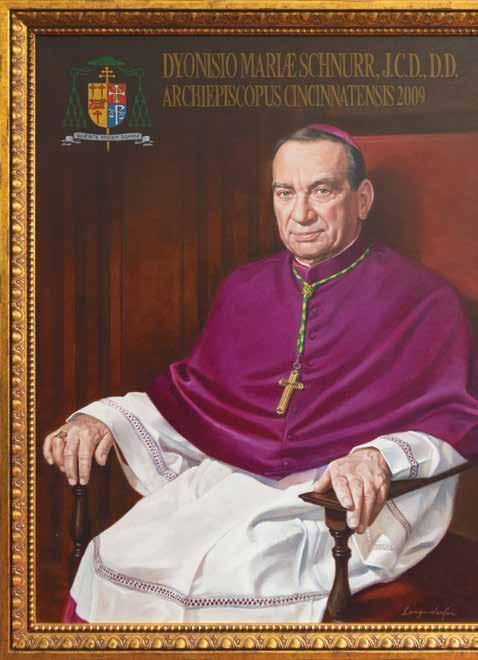

CHRISTIAN ANTHROPOLOGY | Andrew J. Sodergren, M.T.S., Psy.D.
Note: This article is part of an ongoing series on Pope St. John Paul II’s “Theology of the Body.”
As we saw last month, Pope St. John Paul II taught that every human person “is called to love in his unified totality” (John Paul II, 1981, no. 11). Being created in the image of God, who is Eternal Love, our deepest fulfillment in this life is to make and live out a total gift of self. Such a total gift fulfills what the late pope called the “spousal meaning of the body” in his TOB reflections. He recognized that there are two states of life in the Church that most fully embody this total, spousal gift of self: marriage and continence for the Kingdom of God.
Continence for the kingdom takes many forms today, including the various forms of religious life (e.g., monks, nuns, sisters, brothers, consecrated virgins, etc.) and celibate priests. In each of these, men and women make solemn vows or promises to forgo earthly marriage and dedicate their lives wholly to Christ and the Church. Analogous to the bride and groom at a wedding, they make a total gift of self that is permanent and exclusive. The spousal gift in continence for the Kingdom, however, involves a renunciation of the joys and comforts that come from earthly marriage, most especially the gift of children.
By forgoing the bonds of matrimony and the gift of biological children, the man or woman who is totally consecrated to the Lord makes him or herself completely available to do the Lord’s will. Like Jesus’ disciples during his earthly ministry, they are available to follow the Lord wherever He goes and do whatever He calls them to do. Because of this, Catholic tradition has consistently thought of continence for the Kingdom as a higher calling than marriage:
“Virginity or celibacy… bears witness that the Kingdom of God and His justice is that pearl of great price which is preferred to every other value no matter how great… It is for this reason that the Church, throughout her history, has always defended the superiority of this charism to that of marriage, by reason of the wholly singular link which it has with the Kingdom of God” (John Paul II, 1981, no. 16).
An essential fruit of this radical availability to the Lord is an openness to care for all of humanity in a way that goes beyond what married people are able to do. Indeed, husbands and wives are first and foremost called to love and care for each other and for the children born of their love. This is proper to their vocation. Conversely, the vows of consecrated men and women do not bind them in the same way to a specific earthly
spouse and biological children, making them available to become mother and father, brother and sister to all. As Pope John Paul II wrote in his 1981 exhortation on the family, “In spite of having renounced physical fecundity, the celibate person becomes spiritually fruitful, the father and mother of many, cooperating in the realization of the family according to God’s plan” (no. 16).
Unfortunately, there has been a tendency at times among some Catholic authors to denigrate marriage in order to exalt continence for the Kingdom by comparison. Doing so distorts the Catholic vision of marriage and sexuality and also dims the splendor of continence for the Kingdom. After all, a sacrifice is most laudable only when it involves giving up something of great value. Thus, we behold the glory of continence for the Kingdom most clearly when we see it as a free surrendering of the great good of earthly marriage out of love for Christ and the Church. Indeed, time and time again, Pope St. John Paul II affirmed the holiness and beauty of marriage and family and simultaneously elevated the Church’s esteem of continence for the Kingdom:
“Virginity or celibacy for the sake of the Kingdom of God not only does not contradict the dignity of marriage but presupposes it and confirms it… When marriage is not esteemed, neither can consecrated virginity or celibacy exist; when human sexuality is not regarded as a great value given by the Creator, the renunciation of it for the sake of the Kingdom of Heaven loses its meaning” (no. 16).
We will continue to meditate on the nature and fruitfulness of this wonderful calling of continence for the Kingdom of God, next time.






When we celebrate Religious Brothers Day on the feast of St. Joseph the Worker, May 1, we acknowledge and express our gratitude to the humble and dedicated men who answered God’s call to lead lives of service as brothers to all. The Catholic Telegraph recognizes several faith-filled men and their ministries in the Archdiocese of Cincinnati and thanks all religious brothers.

Great joy accompanies sharing beauty. Brother John Boissy, OFM, discovered this as he combined his Franciscan brother vocation with his woodworking ministry.
Brother John planned to be an architect, but with his first set of power tools, he crafted a bookshelf and shoe cabinet for his parents and fell in love with making furniture. To hone his carpentry skills, he applied to Boston’s North Bennet Street School. While he waited for admittance, God was at work elsewhere in his life.
While wrestling with his faith, Brother Boissy found strength and healing through prayer and Eucharistic Adoration. As his faith deepened, he realized God was calling him to something more. He found a home when he visited the Franciscans in 2014.
“It was their sense of community, the ministries they’re involved in, their charisma,” he said.
Feeling God call him to become a brother rather than pursue ordination, Boissy professed his solemn vows in December 2020. “I feel that being a brother is the
way of relating to people and doing the ministry that I’m called to. As Franciscans, our ministry flows from fraternity. We learn to be brothers to each other, but I can also be a brother to other people I meet and share that brotherly bond of Christ with them.”
As Brother Boissy, he entered North Bennet Street School’s two-year program and earned a certificate in cabinet and furniture making. Returning to Cincinnati, he set up shop at St. Anthony Friary and Shrine, overhauled the Shrine’s basement, bringing equipment and tools stored at his mother’s house, and opened his woodworking ministry—Friar Furniture & Crafts.
He crafts cabinets, chairs and other household furniture for the friars and the public and drafted plans for crafting the altar, ambo, tabernacle, presider’s chair, reliquary, and credence table for Roger Bacon High School’s new chapel.
The connection between his ministry and Franciscan life runs deep. “I absolutely love the feeling of creating with God while I’m designing, cutting, assembling, sanding, and finishing. It’s a meditative time that allows me to reflect on creation and on myself,” Brother Boissy said.
Continued on page 58.

“Listen for God’s call. It’s not going to be a direct call. It’s going to be in a quiet way, an invitation from someone. Then trust the Lord and see where He leads you.”
That’s the advice Missionary of the Precious Blood Brother Joseph Fisher offers to people discerning a religious vocation, and it reflects his own call. He grew up on a farm near Wapakoneta, Ohio, an area he describes as “Precious Blood territory.”
“The priests staffed our parish, St. Joseph, and the sisters taught at our school,” he explained. “I had this idea that I wanted to serve the Church in some way, but not as a priest. It just didn’t feel like a good fit for me.”
When Fisher became a server in the sixth grade, he attended the annual servers’ picnic, held at St. Charles Seminary (now St. Charles Center) in Carthagena. “Kind of on a dare” from a friend, he filled out a card at their vocations tent, asking for more information, but when his name was called from the tent, young Joe was in the chapel—“I hid there,” he admitted.
Late on a Saturday afternoon that fall, a car drove up the lane to the family farm, and a Precious Blood priest alighted, asking to speak with the young man and his parents about the vocation of a religious brother.
“There’s no hiding from God,” Brother Fisher said with a laugh. “He found me anyway.”
Fisher enrolled at Brunnerdale, the Society’s high school seminary; graduated from Saint Joseph’s College, in Rensselaer, Indiana, with an accounting degree; was professed a brother in 1977; and later earned an MBA from the University of Dayton. Brother Joseph’s primary ministry has been as treasurer of the former Cincinnati Province, safeguarding the congregation’s resources and assisting his fellow missionaries.
“I like talking about my vocation story,” he said. “Our congregation has foreign missions … [and] I try to remind everybody that we’re all called to be missionaries in one way or another, to promote the worldwide mission of the Church, and to proclaim the Good News.”
“I was called to be a brother from the start. The idea of being present to people throughout their lives and working with the poor appealed to me more than priestly ministry. From the very beginning, the call to be a brother was very strong and very clear,” reflects Glenmary Brother Jack Henn, after 50 years of ministry.

Originally from Bellevue, Kentucky, Brother Henn graduated from Thomas More University in 1971 with a degree in accounting and worked in his chosen field for a time. But then he felt called to make a change, to do more to help others, and to “give my whole life to this venture.”
He was drawn to the Glenmary Home Missioners and their work serving the poor in rural areas of the United States. He made his Glenmary oath in 1976. His ministry has included three terms as Glenmary’s vice president and has taken Brother Henn to North Carolina, Georgia, Mississippi, and Kentucky, primarily working with the elderly and youth. He’s currently involved in caring for the community’s senior and disabled members and serves on the board for the Religious Vocation Conference.
Brother Henn has found that the vocation of religious brothers is unfamiliar to many people. “For me, the definition is simple. It’s a man who makes a personal commitment to a celibate lifestyle, to community, and to be a follower of Christ, loving others into fuller life.”
For those interested in learning more, Brother Henn recommends the Vatican document “Identity and Mission of the Religious Brother in the Church,” published in 2015 by the Congregation for Institutes of Consecrated Life and Societies of Apostolic Life, and “Blessed Ambiguity: Brothers in the Church,” (Christian Brothers Publications, 1993).

There is a certain sense of peace, joy and gratitude that comes from responding to God’s call for us. Br. Andrew Kosmowski, SM, has certainly found that to be the case.
Originally from upstate New York, Br. Andrew attended Bradford College in Haverhill, Massachusetts, where he studied natural sciences and education. He went on to work for Nature’s Classroom, a non-profit that focuses on environmental education and team building. Drawn to common life, Br. Andrew began discerning religious life and learned about the Marianists (Society of Mary).
“When I stumbled upon the Marianists, I found peace,” he said. “With the Marianists, there is no pressure to become a priest, and as I approached my final vows, it wasn’t a question because I had found my home as a brother. It doesn’t mean that they aren’t challenges, but there is a depth of contentment that really is a peace the world cannot give.”
Br. Andrew entered the novitiate with the Marianists in 2004 and professed final vows in 2010. His ministry began in the classroom but soon shifted to the library. Since 2019, Br. Andrew has served as a librarian at the North American Center for Marianist Studies in Dayton. “A big part of my work, and the most rewarding, is helping other people draw closer to Christ by finding the information they need,” he said.
Since his childhood, the Boy Scouts have played a significant role in Br. Andrew’s life and he continues to remain actively involved. He recalls the National Scouting Jamboree in 1993 as an “experience that brought me back to the Church. Being with Scouts from around the world showed me the universality of the Church in a way I hadn’t experienced before.”
Br. Andrew has served as chairperson for the Archdiocese of Cincinnati’s Catholic Committee on Scouting since 2022. He collaborates with the Center for the New Evangelization on catechetical programming and ways to integrate scouting into youth ministry. For his efforts, Br. Andrew was recently named a National Outstanding Eagle Scout Award recipient.
He feels the vocation of religious brothers is “very hidden in the Church,” yet one that is significant and needed, and for him, a call that has been “a gift of the Holy Spirit.”

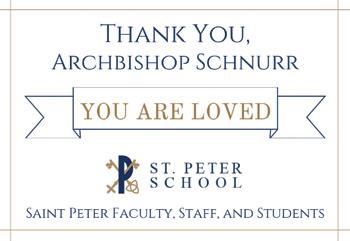












We celebrate Saint Joseph the Worker on May 1st. In Genesis, the first book of the Bible, God creates man and tells him to take care of the rest of His creation. The work that we do has always mattered to God and He made each of us to do something special.
As Mary’s husband and Jesus’ foster father, St. Joseph worked hard to care for the Holy Family. He earned money for his family as a carpenter and he taught Jesus how to be a carpenter, too.
The Bible doesn’t tell us any words that St. Joseph said, but it does tell us some of the brave things that he did. Trusting in a message from an angel, St. Joseph led Mary and baby Jesus to safety, fleeing to Egypt, to protect Jesus from King Herod. In this way, St. Joseph is a model for how we can live a holy life, too.
“St. Joseph, you were a hard worker, caring for the Holy Family with your labor and bravery. Teach me to work with patience, perseverance, and love, always seeking to do God’s will. Grant me the grace to see the dignity of work and to find joy in it. May I, like you, be a source of strength and support for those around me. St. Joseph, Worker, pray for us!”

Carpenter Courage Dignity Egypt Holy Family Genesis Love Patience Perseverance Work



1 Geometric saint? 5 Archdiocese in
“___ all your worries upon him” (I Pet 5:7)
Those in hopeless
53 Young dog 55 Archdiocese in Kenya
60 Leaping marsupial 65 Rented 66 Jacob was afraid to meet him 67 Certain Mount 69 Gap 70 Barks
71 College of Cardinals' task regarding the pope 72 "It was___joke."
73 Petty quarrel 74 Cowboy name
"Good" queen of England
1 “For as you ___, so will you be judged…” (Mt 7:2)
Synthetic fabric
Maturing
“When pigs fly!”
Certain sin
Holy object 47 Detest 48 Very dry champagne 49 Archdiocese in Massachusetts
Bygone Russian space station 7 Natural balm 8 Pilate washed his in front of the crowd 9 Patron saint of Scandinavia
Scratch
Expensive car
Hits the slopes
Personalized post-mastectomy and post-lumpectomy services
• Custom breast forms, breast prostheses, bras, camisoles,


13 Bordeaux bean? 21 Steal from 23 Cyberzine
25 Wife of Abraham 28 The Evil One 30 Crustacean
31 Ezekiel scattered this to the wind
32 Beige
33 For fear that
34 Restraint
35 Pertaining to Mars
36 Friends
37 Split
39 Rite in the Church in the West
43 Lawfulness
46 NYC nightclub
50 Suckled
52 Hasten
54 French World War I soldier
56 Jericho heroine
57 “___ Mio”
58 They often signal the start of a religious service
59 Thoughts
60 “I will give you the ___ to the kingdom of heaven” (Mt 16:19)
61 PDQ
62 Soft lambskin leather
63 Sudden blast of wind
64 Singles
68 Tread the boards




with Archbishop-Emeritus Dennis M. Schnurr
One of the things Pope Francis has said that I have always appreciated is, “God has a sense of humor.” That has certainly been evident throughout my life. There has often been my plan and God’s plan … with the latter always prevailing!
I grew up the fourth of six children in Hospers, Iowa (population about 700). My early life was inspired by the strong witness of my parents, who took very seriously their responsibility as the first and best teachers of the faith. They never had much money —Dad ran a filling station and Mom stayed home with the children—but they attended Mass faithfully, prayed regularly, and were always ready to help the pastor or religious sisters at St. Anthony of Padua parish in any way they could. Mom and Dad radiated the joy found in serving others.
Every boy at St. Anthony, all 30 of us, served at Mass starting in 3rd grade. This was back when the altar servers had to learn the responses in Latin, something that did not come easily to me. With the help of my older brother, however, I mastered it. When I was in 5th grade, several parishioners asked me, “Have you ever considered the priesthood?” Naturally, I dismissed the idea … but the seed was planted. In 8th grade, my pastor wanted me to attend a high school seminary, but this would have meant moving away from home, which I was not ready to do. However, his example of humble servant leadership made a lasting impression on me.
While both my parents were faithful Catholics, my mother was a particularly holy woman. She was born and raised in Hospers, had a strong devotion to St. Anthony (a gift she passed on to me), and prayed the Rosary daily. In May and October, we would pray the Rosary every day as a family. Unfortunately, this habit tended to fall off as we children reached high school age. I remember coming home one October evening my freshman year and seeing Mom praying the Rosary alone. She was weeping. It cut me to the core.
Following my mother’s example, I began praying the Rosary

daily as a sophomore. By my junior year, the idea of the priesthood resurfaced with every Rosary. I knew that the question of whether or not this was my true vocation could only be resolved through deeper discernment, so I decided to enroll at Loras College, a Catholic college in Dubuque with a seminary. My mother knew of my plans, but I had not fully informed my father. Dad was something of a “town crier”—he tended to spread news very quickly at his service station and breaks at the coffee shop—and I did not want everyone in Hospers asking me about the priesthood. The day Dad found out that I was entering the college seminary was the day he and Mom dropped me off at Loras.
Within two months of college seminary, I was confident that I was called by God to be a priest. Everything about it resonated with me, and I felt a great sense of joy and relief to know that I was on the right path. And what a path it has been! I had always envisioned myself as pastor of a country parish in Iowa, teaching the faith, administering the sacraments, visiting the sick, and accompanying my parishioners through the peaks and valleys of life. But my plan was not God’s plan. My priesthood has taken a completely different direction, from graduate studies in Rome and Washington, D.C., to roles at the Apostolic Nunciature and U.S. Bishops’ Conference, to working closely with Pope St. John Paul II on World Youth Day 1993 and, finally, to serving as Bishop of Duluth and Archbishop of Cincinnati.
This July, I will celebrate 51 years as a priest. While it has not been what I expected, I would do it all over again. I have found the priesthood spiritually rewarding, deeply interesting, and even exciting. Being open to God’s plan has led me to a fuller life than I ever could have imagined.
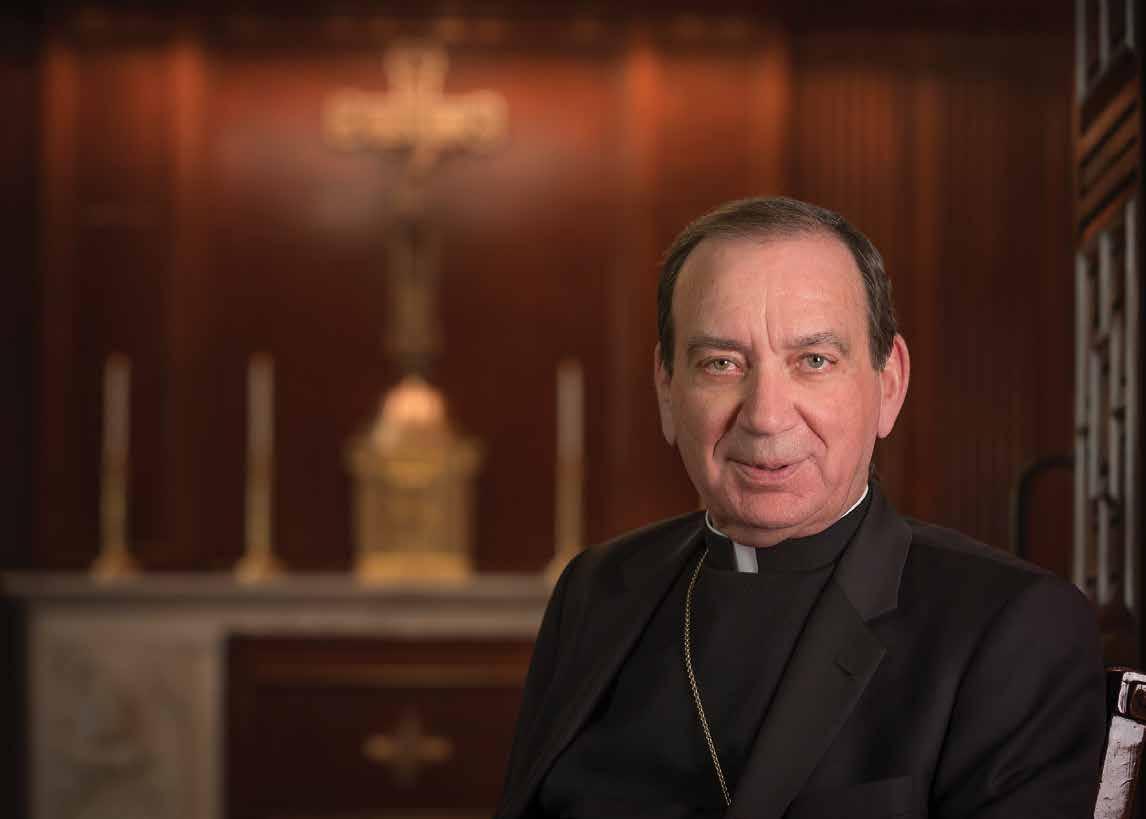
The Missionaries of the Precious Blood extend our heartfelt thanks to Most Reverend Archbishop Dennis M. Schnurr for his years of faithful leadership and devoted service to the Archdiocese of Cincinnati. Your shepherding spirit and unwavering commitment to the Church have been a blessing to many.
As you enter retirement, we offer this prayer for you:
"Loving God, we give thanks for the ministry of Archbishop Schnurr. Bless him with health, joy, and peace in this new chapter of his journey. May he continue to be a witness to Your love, guided always by Your wisdom and grace. Amen."
With appreciation and prayers,
The Missionaries of the Precious Blood


